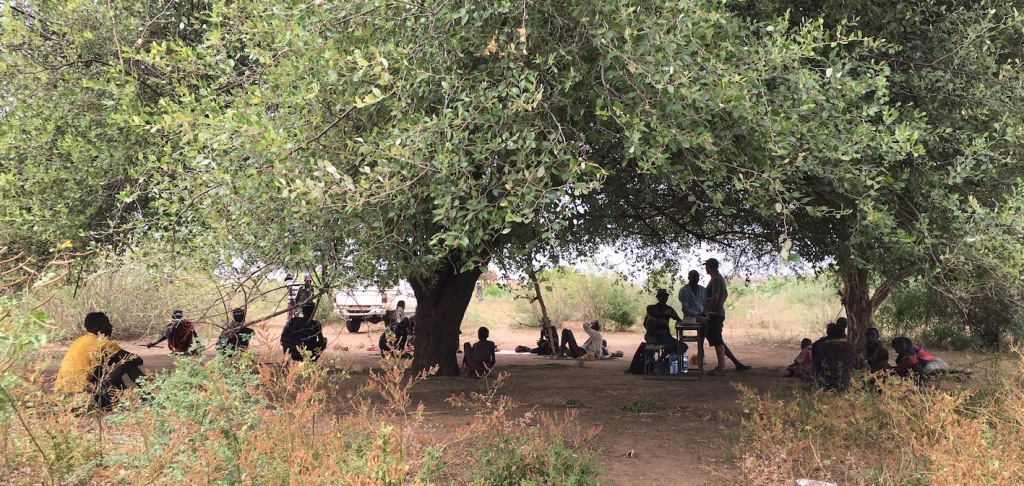The third post in a series introducing a new article on researching poverty and wealth in Ethiopia.
In 2017 my colleagues and I launched a project that we called Shifting Inequality Dynamics in Ethiopia (SIDERA). [1] The project was led by Mercy Fekadu of Addis Ababa University, and the focus was on a conjuncture of politics, environment and development in the Lower Omo Valley, where a large hydro dam was being built and new plantations established. The infrastructure projects were causing displacement, while new roads, markets, and an influx of labour migrants were changing the social landscape. [2] We worked in Nyangatom, one of the southernmost districts of Ethiopia, bordering Kenya and South Sudan.
My responsibility as part of the SIDERA team was to adapt the Stages of Progress method to the local context and to assess how wealth and poverty had changed in Nyangatom over the period since the dam was built. I was lucky to work with exceptional colleagues Dessalegn Tekle Loyale (a PhD student in Engineering at Addis Ababa University and a native of Nyangatom), David Pertaub (then a researcher at UCL), and Jil Molenaar (who wrote her Master’s thesis on the project).

Krishna and colleagues, who devised the method we were adapting, provided a manual for fieldworkers, which we used as a guide. The process begins with convening a representative group of locals, and working out with them how poverty and wealth are conceived in the community. [3]
To our surprise, this apparently simple question proved effectively unanswerable – at least, there was no consensus on how to answer it among the many people we spoke with. To summarise:
| Elicit a common understanding of concepts of poverty. | ||
| There was no term everyone was comfortable with. The closest equivalent (ekulaket) implied lazy, neglectful, disgraceful; it contrasted not with wealth but with resourcefulness. | ||
| Define the stages of progress: What does a household do when it climbs upward gradually from poverty? | ||
| No widely agreed distinctions corresponding to material assets alone. | ||
| Bring group to consensus on the poverty line. | ||
| No consensus! |
To be clear, it’s not that nobody would endorse a ladder-like model of poverty and wealth, corresponding to, say, how many cattle they owned. If you pressed them, they would (and trust me, we tried in numerous conversations, sometimes using bundles of sticks and pebbles as visual aids).
Rather, people didn’t draw the lines between groups in the same place; and they made important qualifications. It depended, for example, where your resources were (30 cattle held in the same place were more vulnerable than 3 groups of 10 distributed among a few associates, for example).
My suspicion is that in some places where the Stages of Progress method has been used, these concerns have been dismissed in the interest of coming up with a workable system (in the eyes of the surveyor) for sorting people into groups. There’s a term for this – facipulation, i.e. manipulation by a facilitator, whether conscious or unconscious. [4]
Reconstructing history
Where we made more headway was in eliciting shared understandings of important events in the past. People had clear memories of a transboundary conflict 25 years ago, and an episode 10 years ago when the value of goats collapsed such that you could exchange one of a can of maize. As we note in the paper, however:
The most widely known event in recent history was the last annual flood of the Omo in 2014 (five years before our study). After this, the completion of the Gilgel-Gibe III dam upstream meant that the annual flood ceased to be predictable, undermining the possibility of flood recession farming. In the same year, a Chinese contractor built a permanent bridge across the river. The year 2014 was therefore commonly referred to as ‘the year the Chinese stole the flood’ or simply ‘the year of China.’
Questions and prospects
In light of the problems with the Stages of Progress method, is it still possible to reconstruct how wealth and poverty have changed in the Lower Omo in this period since the dam was built?
Yes. None of what we report here disputes the feasibility of reconstructing the dynamics of wealth in Nyangatom over the past decade or more – only that the Stages of Progress isn’t an instrument well-suited to this purpose.
We went on to devise a better (more locally appropriate) way of asking about wealth and poverty … which I’ll have more to say about in future.
* * *
Notes
[1] Our work was supported by the UK’ Economic and Social Research Council and the Department for International Development (grant ES/R002460/1, 2018-2019). Warm thanks to everyone who contributed to the project including Fana Gebresenbet, Jenny Hodbod, Emma Tebbs, Lucie Buffavand, and Kris Chan.
[2] For background see Mursi Online and the Omo-Turkana Research Network.
[3] We departed from the manual’s instructions in a couple of ways, e.g. convening groups of men and women for separate conversations. For a full account see the paper, which is Open Access.
[4] Priya Deshingkar and Craig Johnson discuss risks of facipulation in their contribution to a forum in PLA Notes 46.
